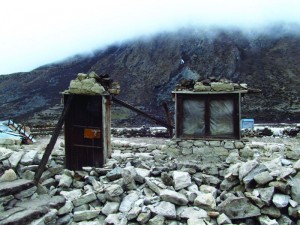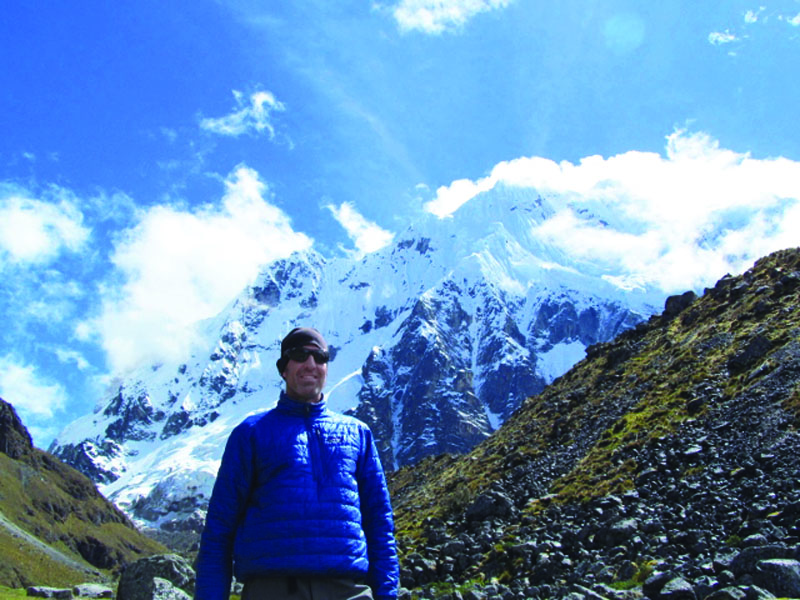As Conan Bliss ’92 tells it, that was the first sign something was “weird” as a result of the earthquake he and his expedition team had just experienced while attempting to climb Mount Everest.

Thousands of people in Nepal’s Khumbu valleys, including sherpas who help climbers like Conan Bliss (top) navigate Mt. Everest, lost their homes in the earthquake. Rebuilding work still continues today.
On the morning of April 25, the guide for Madison Mountaineering was in the middle of his crew at about 20,500 feet in the Western Cwm, between Camp 1 and Camp 2, a few thousand feet above base camp. It was snowing, so visibility wasn’t good. A loud cracking noise came first, then everything started bouncing.
“It felt like you were on a trampoline and some heavy person got on the other side and started moving around,” he said. “The glacier was going up and down. It did a tremor and then it slowed. … But you heard all this ice, all these things crashing.
“Base camp was directly in the line of fire,” Bliss said. “This massive ice cliff a half kilometer away came off Pumori. It crashed to the ground, then vaporized, and that caused a shock wave of wind and air. … Just hurricane force, instantly, and then that just picked up. It had probably snowed a foot or so in the last few days — it picked up all that snow and just blasted it.”
After learning from other teams that Madison Mountaineering’s doctor Eve Girawong had died, their base camp tent was in shambles, and the lower valley destroyed, the team of 12 Western climbers and 14 Nepalese Sherpa staff decided to head down. How to do that, though, was a challenge.
Coming back through the Khumbu Icefall was the primary option. But the “Icefall Doctors,” locals who are paid by permit fees to maintain the route, had lost some of their members and aftershocks made the Icefall route too dangerous to fix.
A few experienced Western and Nepalese guides did what they could to fix the route, making it about a quarter of the way down from Camp 1 in one day. Then another massive aftershock hit destroying their work. Bliss says the guides returned and they said, “We’re not going back in there with clients. No way. No how.”
At this point, the decision was made to use helicopters to get the climbers and Nepalese staff off the mountain. The Nepalese were worried about their families and villages, and everyone was concerned about the weather.
“As soon as we got to base camp, this wealth of information fluttered in,” Bliss said. “The media eyes were focused on this drama at Everest. And it was a small fraction of one percent of the real tragedy that went on. Once that was apparent, we’re like, this expedition can’t go on. The Nepalese need to get back to their families. Restoration work needs to happen.”
The trip was over but the work wasn’t. While some expedition members stayed to help build houses in the valley (and part of him feels guilty to not be a part of that), Bliss is doing what he can from his home in Germany to help raise money to rebuild Nepal.
